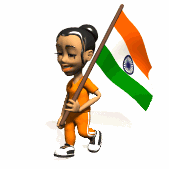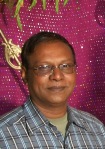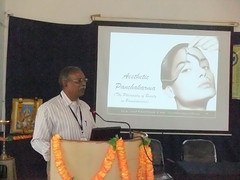Dear colleague,
- Please could you spare a few minutes of your time to complete our Ayurveda/Siddha/Unani (ASU) Curriculum Evaluation Survey.
- No more possible
- To participate please click the link below or copy it into your web browser.
- Thank you for your time!
- Smt. Shailaja Chandra, PI & Former Secretary (AYUSH) shailajachandra1@gmail.com
ASU CURRICULUM EVALUATION QUESTIONNAIRE
BACKGROUND
• The review on the status of ASU education & practice is being conducted by the PI as a part of a Project undertaken with the prior approval of the Department of AYUSH, Ministry of Health & Family Welfare. In this section the effort is to gather the views of important stakeholders among teachers, researchers, practitioners and students who have had experience of or have been exposed to the teaching syllabus of Ayurveda, Unani and Siddha medicine. It is not intended to comment on the performance of any organization or group. The effort is to ascertain how far the stakeholders feel that a significant part of the syllabus of UG and PG is directed specifically to address patient-care. Also to seek suggestions on how the focus can be modified to benefit the public and orient the ASU practitioner a person with competencies and skills that are capable of responding to specific medical and health concerns.
PURPOSE AND SCOPE OF REVIEW:
The purpose of the review is to answer the following questions:
1. Does the CCIM Ayurveda/Siddha/Unani(ASU) Curriculum identify and provide the necessary skills, knowledge, and experience to turn out practitioners that inspire confidence in providing medical and public health care collaboratively and in a variety of health settings in the country?
2. Does the CCIM ASU Curriculum have sufficient practical content and application to equip the graduate/postgraduate with competencies and skills to make him a sought after health provider because of his special training?
The scope of the review will include:
• structure/format year-to year;
• terminology – to ensure consistency with the objective of preparing the graduate/post graduate for using his knowledge and skills for practical application in the areas of research/education/industry but predominantly practice;
• content – to ensure current relevance, focus on preventive, promotive and curative health in practical terms based on ASU principles
• description of additional tools and resources needed to upgrade the practical aspects of teaching with the aim of producing good physicians for the benefit of society.
GUIDELINES FOR RESPONDENT
• In your review you should consider whether the objectives (both theoretical and practical), the duration of course, the assessment/instructional tools, and equipments/supplies are sufficient and appropriate
• Each section should contain some response, however brief, to indicate that you have assessed this aspect of the program. Please answer questions you feel you are qualified to respond to based on your experience/training in greater depth.
• We value your input which is aimed at informing policy-makers about the knowledge and skills presently given to the ASU students through the curriculum and a projection of the practical suggestions of stakeholders. There are a number of way that you can contribute:
Ø Provide a postal submission by 30 October, 2010. Receipt of submissions will be
acknowledged. If no response is received the designations and addresses of those that did not join the consultation will be listed to show efforts made to involve maximum stakeholders.
Ø Complete an online questionnaire by 30 October, 2010
Ø Have a phone interview during October 2010, if you wish to give only a limited suggestion.
o Project staff will conduct the interview during October, 2010. Participants will be contacted in advance to arrange a suitable time.
o If you would like to participate in a phone interview please complete the following to enable us to contact you. Responses will be acknowledged on receipt.
o Contact Information
o Name:
o Role: Student/Teacher/Administrator
• For more information, please contact Smt. Shailaja Chandra:
shailajachandra1@gmail.com
Ph: 09810501172
• Once completed, this form must be submitted directly to the Principal Investigator. The address is as follows:
Smt. Shailaja Chandra
Room 504, Central Council for Research in Unani Medicine
61-65, Institutional Area, Opp. D-Block,
Janakpuri, New Delhi-110058.
ASU CURRICULUM EVALUATION QUESTIONNAIRE
1. SECTION A: Respondent Information
- Name of Program Being Evaluated: BAMS/BSMS/BUMS/MD/MS(Ay)(Siddha)(Unani)
- 2. Name of the Institute:
- 3. Respondent’s Name
- 4. Position/Title:
- 5. Years of Combined Experience and Education in Field:
- 6. Mailing Address:
- 7. Telephone:
- 8. E-mail:
- 9. Fax: –
SECTION B: Curriculum Evaluation
- 10. Does the curriculum description capture the types of duties a graduate can expect to perform in the work environment? Please explain.
- 11. Do you feel that the program length is sufficient to produce graduates with the required entry-level knowledge, skills and competencies required to function as a confident, ASU practitioner? Please explain.
SECTION C: Admission Requirements
- 12. Do you feel that the present program entrance/admission requirements will ensure that students possessing basic knowledge and background enter the program? Please explain
- 13. Do you feel specific subjects (e.g.Maths/Physics/Chemistry/Biology) – for entrance/admission are required to fulfill course objectives? Please explain.
SECTION D: Curriculum Content
14. Does the sequencing of training (i.e. order of subjects presented) within the curriculum properly address course pre-requisites and/or co-requisites? Are there any subjects within the program you feel should be pre-requisites for other subjects, but have not been identified? Please explain.
15. Is the time allocated to EACH subject sufficient, excessive, or inadequate from the point of view of building competencies to practice ASU? Please explain.
16. Do you feel that all necessary learning objectives are included within the individual subjects? Please explain and suggest or give examples of what should be additionally included/excluded.
17. Are there any subjects that contain learning objectives not particularly relevant to the subject/program? Please specify, providing a rationale where necessary.
18. Are there areas of the examination requirements that need to be revised or removed because they are outside the prescribed competencies and skills expected of an ASU practitioner? Please specify and give a rationale or examples where necessary.
19. Do you feel that there is a proper balance between theory (i.e. classroom) and practice (i.e. lab/clinics) ? Please explain where greater practical application is called for.
SECTION E: Resources
- 20. Do you feel that the tools, equipment and/or supplies listed for practical components of the curriculum are satisfactory for program delivery (i.e. do they support the learning objectives of the program)? Please explain
- 21. Are the textbooks listed with the curriculum adequate for program delivery (i.e., are the textbooks sufficiently updated and relevant considering the present revival of interest in traditional medicine. Please explain.
- 22. Do you feel there is adequate learning resources (i.e. print media, audio-visual materials, etc.) provided for program delivery to actively engage students? Please explain.
- 23. Do you feel that instruction is reinforced with appropriate technical inputs (i.e., computer software, hardware, etc)? Please explain where you feel change is required.
- 24. Is there specialized equipment, textbooks, software or other resources which you feel are not listed but would strengthen the delivery of this program from a future practitioner’s point of view? Please specify, providing a rationale where necessary.
SECTION F: Program Instruction/Evaluation Methods
- 25. Are there any instructional methods that you would suggest for subject/program delivery? Please specify, providing a rationale and good examples observed elsewhere if relevant.
- 26. Do you feel that the methods of evaluation used for this are program appropriate (i.e. is there an adequate balance of theoretical and practical assessment conducted for each course)? Please explain.
- 27. Do you have recommendations for additional evaluation methods which would ensure student involvement and competency? Please specify, providing a rationale where necessary.
- 28. What qualifications and experience do you feel will be required for potential instructors hired to teach core competencies/subjects/allopathic content within this program? Please specify, providing a rationale where necessary.
- 29. Are there specific courses within the program that require a different combination of training, experience and clinical exposure than that which is presently provided generally by the teaching faculty? Please specify areas/subjects/practical classes.
SECTION G: Graduation Requirements/Employment Requirements
- 30. Are the requirements for successful completion (i.e. passing grades of subjects, internship term completion, etc) of the program sufficient? Please explain.
- 31. Please list in order of priority three most important type(s) of job options available to graduates of ASU medicine selecting from Private Practice, resident in general hospitals/Nursing Homes, further studies like Ph.D, MBA, Research, industry (labs and/or quality control)
SECTION H: Internship Term
- 32. Do you feel that the internship term is appropriately placed within the program? Please explain.
- 33. Are the objectives of the internship term clear and sufficient to further build on the students’ knowledge and skill level already developed? Please explain.
- 34. Is the duration of the internship training adequate to reinforce, and allow students to make a practical application of, the theoretical concepts already learned? Please explain.
- 35. Are the evaluation methods utilized for the internship term appropriate? Please explain.
SECTION I: Practice
- 36. In your view what kind of modification is needed in the syllabus to be able to cater to the medical needs of people both in urban and rural areas where the ASU practitioner essentially represents the ASU system but is equipped to deal with critical situations when no allopathic practitioner may be available.
- 37. Are you aware of any states/government orders which allow the ASU practitioner to prescribe drugs and conduct certain interventions using allopathic systems/medication? Give details where you can.
- 38. It is stated at different public for that the ASU practitioner hardly uses his ASU knowledge and skills as a practitioner as he has to provide services as per public demand and choice which calls for quick relief.
- 39. To what extent does each part of the prescribed syllabus refer to knowledge as contained in the selected ASU texts and mastery of Sanskrit/Urdu and how much does it deal with knowledge and skills that will be of direct relevance to providing ASU treatment to patients?
- 40. Is there scope to include more applied Ayurveda/Siddha/Unani approaches, techniques and skills which would be relevant to rural areas, or to specific disease oriented target groups where Ayurveda/Siddha/Unani has a clear strength?
- 41. Can you suggest a few examples which do not find place in the syllabus but which are very important only to give an idea of what kind of competencies can be included under ASU which would be useful and sought after by beneficiaries that search for gentler alternatives to interventions based on chemical drugs?
- 42. Do you think that the functions of curriculum design should be handled by special agencies/groups that are conversant with the deficiencies in health manpower and the search for treatment of chronic diseases, auto-immune diseases and intractable conditions?
- 43. Do you think that a periodic review of each academic program is needed to maintain relevance and promote excellence? If yes, how frequently should be program be reviewed?
SECTION J: Additional Comments
- 44. Please provide any additional comments regarding this program you feel have not been addressed.
SECTION K: Respondent Declaration
- 45. I certify that my participation in the study is purely voluntary and the responses given by me were based on my own individual perception and I am not compelled to respond in any particular way by the investigators or by any other authority.
- 46. Date of Completion
Finish survey ***






 poll on
poll on 




















